By Ragoo Rao, Ethologist
The vultures are hungry; the vultures are waiting; as disgusting as a vulture eating… These are the phrases we use to describe a person as despicable — an obnoxious behaviour, more so at the dining table. In fact comparing a despicable man with a vulture is an insult to the latter and not the former. For, vultures are one of the most highly specialised birds to lead a life as the nature has ordained them. And they are perfect in that.
Vultures are nature’s undertakers. They are the waste management specialists. Whatever living has to die. Several animals die, some killed by predators and some die a natural death by disease or injury. Predators devour their prey and eat up the fleshy parts, leaving the remaining carcass to other animals like foxes, boars, hyenas and such carrion feeders.
These feeders also take their choice and leave a lot of unwanted or uneatable parts of the carcass like their skin, viscera, bones and tough ligaments. This is when the specialists arrive — the vultures, to finish off the last remains. After their job, the place looks like a polished dinner plate with only a few strands of fur and congealed blood remaining.

The vultures are physiologically equipped to handle such tough and despicable remains of a dead animal. Their stomach acids can digest any tough ligament or tendon, bone or fur and they are equipped with such resistance that bacteria and other microbes present in the carcass — which would have killed any other animal devouring it — gets neutralised by the digestive system of vultures.
They are able to neutralise excretions too and they act like bactericide. Their bare legs, which are exposed to harmful germs while feeding, gets sanitised as they excrete a urine-like liquid on their feet and toes after a feeding session.
It is a misconception that vultures are filthy and foul-smelling birds. On the contrary, they are the cleanest of birds, regularly bathing and preening to keep themselves clean. To do this last rites chore of theirs, vultures wait patiently perched on nearby trees or keep circling the sky above the carcass till the initial feeders leave after having their fill.
The Egyptian vultures are called so because they have been worshipped in ancient Egyptian civilizations and there are mentions and pictures in the Egyptian hieroglyphs and statues. They are even nicknamed the ‘Pharaoh’s Chicken’. This is quite possibly owing to their golden mane-like crest, which gives them the Pharaoh’s look.
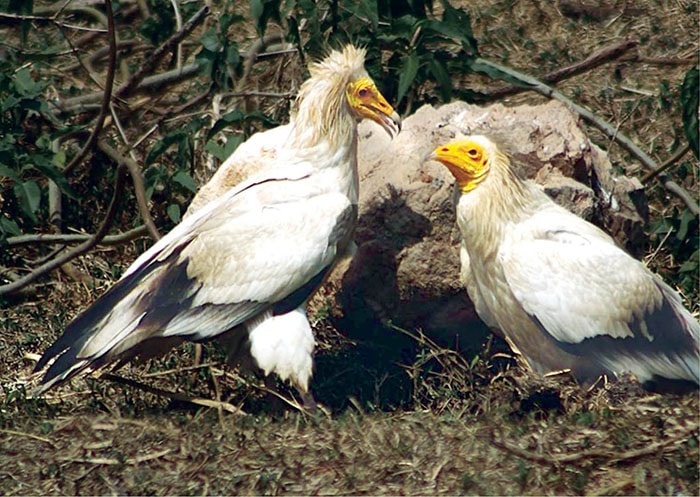
There are three sub-species of Egyptian vultures and two of them are sighted in the Indian region. The Neophronpercnopterus, the nominate race habituating the North West India and Neophron p. ginginianus, slightly smaller than the Northern race and differing in colour and size of the beak and legs, habituating most of the Indian sub-continent, including Mysuru.
Mysuru, with its wonderful lakes and small creeks, attracts a lot of Egyptian vultures during mid-day to quench their thirst. The old practice of discarding dead farm animals by lake sides were a blessing for vultures, especially the Egyptian vultures.
They can tolerate human presence to a certain extent and live on the fringes of human settlements, adjoining lakes and other water-bodies. Whenever a carcass was thrown at the lake side, vultures would descend and finish their job. Both humans and vultures gained from this.
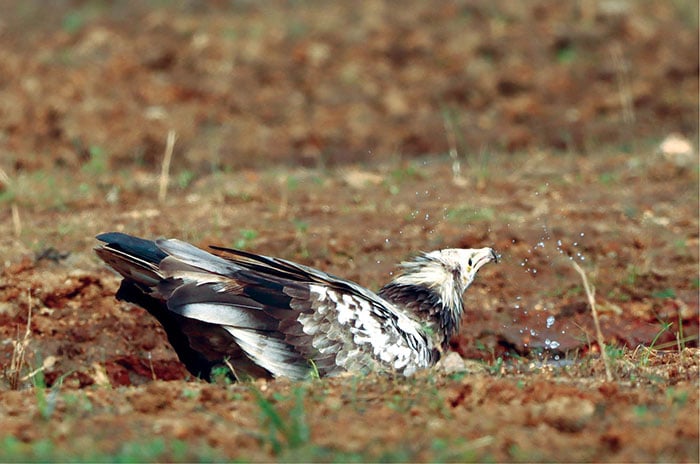
No end to man’s greed
Unfortunately, man cannot see anything beyond his own needs, that too, immediate needs. His ignorance and arrogance has spelt doom for all creatures. His greed has spoilt and killed many water bodies on which birds like Egyptian vultures thrive. Egyptian vultures which can digest and neutralise many bacteria in carcasses so easily, is not in a position to digest the chemical contaminants in water bodies.
Consequently, they started breeding less frequently and whatever they bred the hatchlings could not tolerate contaminated meat (poisoned rodents and dog carcasses). As a result, most of the hatched young do not make it to adulthood. So, the population of Egyptians vultures started dwindling.
Most of the culled chicken waste is dumped in lakesides and grasslands and vultures are attracted to this but are shooed away by packs of stray dogs. This is one more reason to go hungry and get decimated.
Still, the Egyptian vultures struggled to survive. Though scantily, they started to breed and raised their young. The final blow came from man again who cut tall nesting trees, especially the lone trees in open fields. Then the vultures selected cliff ledges and abandoned stone quarry cliffs. This kind of nesting sites is rare and many vultures skipped their breeding seasons.
The Egyptian vultures, like all raptors have a long life span. The young take several years to mature into adulthood. The adult birds are beautiful with their white plumage and golden crests. The young have an entirely different coloured plumage. They are dark brownish with white and black blotches.
It takes about close to three years for a hatchling to enter adulthood with its impressive white plumage, golden flowing head crest, walking with the stride of a marching German soldier. One look at these magnificent birds makes recall the ancient Egypt and their Pharaohs. Should we allow the Egyptian vultures to go like the Egyptian civilization? Let us ask ourselves.
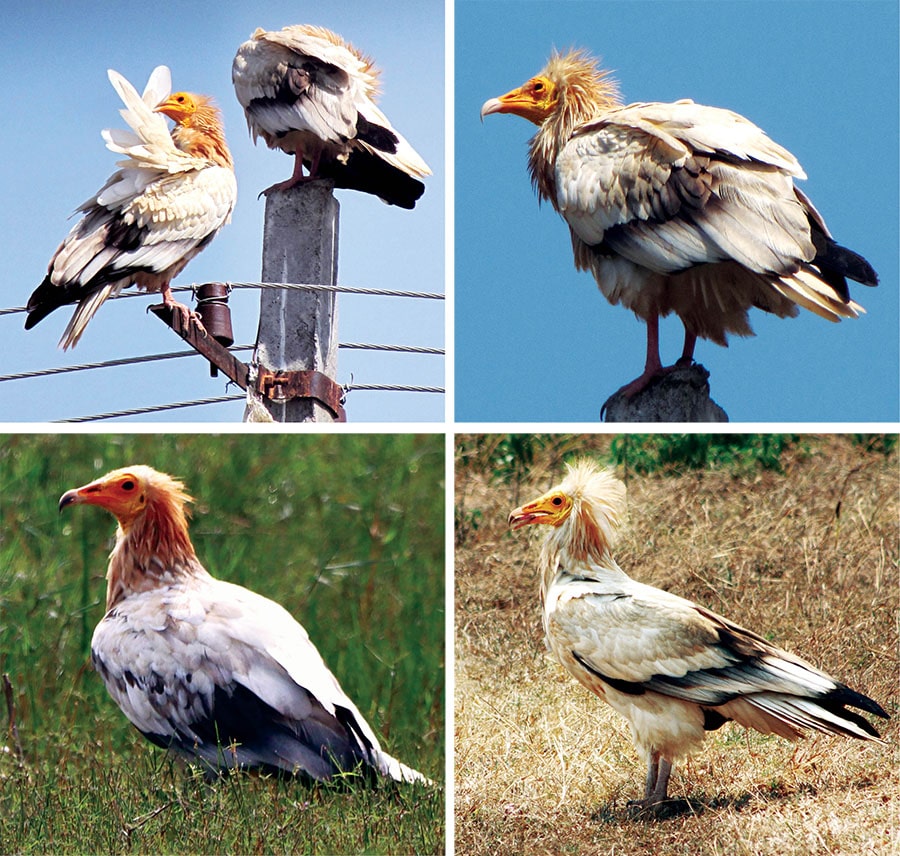
Nine Species of vultures in India
There are nine species of vultures in India, some occupying a niche place like the mountainous regions, grassland and deserts.
- King vulture (Sarcogyps calvus)
- Cinereous vulture (Aegypius monachus)
- Eurasian Griffon vulture (Gyps fulvus)
- Himalayan Griffon vulture (Gyps himalayensis)
- Long-billed vulture (Gyps indicus)
- Slender-billed vulture (Gyps tenuirostris)
- White-backed vulture (Gyps bengalensis)
- Egyptian vulture (Neophron percnopterus)
- Bearded vulture (Gypaetus barbatus)
The largest of these nine species being the Himalayan Vulture – Gyps himalayensis and the smallest being the Egyptian Vulture – Neophron percnopterus (in Greek mythology, the belief is that a trickster, Neophron, was cursed and changed to be a vulture by Zeus and hence named Neophron and Percnopterus meaning black bordered wings).
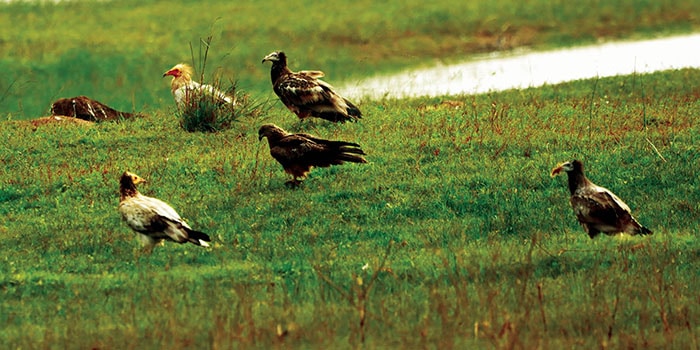
Reasons for death of vultures
- The major reason behind the vulture population getting nearly wiped out was the drug Diclofenac. It was found in the carcass of cattle on which the vultures feed.
- The drug was commonly administered to cattle to treat inflammation.
- Its veterinary use was banned in 2008 by the Government of India.
- Bioaccumulation (the gradual accumulation of substances, such as pesticides, or other chemicals in an organism) of Diclofenac caused kidney failure in vultures, leading to death.
- Diclofenac is dangerously fatal for vultures. Even 1 percent of it in carcass would kill the vulture in a short time after it feeds on such carcass.
- The poisoned carcasses were dumped to kill some local stray animals. But when vultures fed on them, it became one of the vital reasons leading to their death.
- It is imperative to manage our carcass dumps and make sure that poisoned carcasses are not dumped for the vultures to feed on.
- The Forest Department cremates the animal carcasses instead of burying them, to keep the poachers away. But this practice is denying food to vultures leading to their death out of starvation.



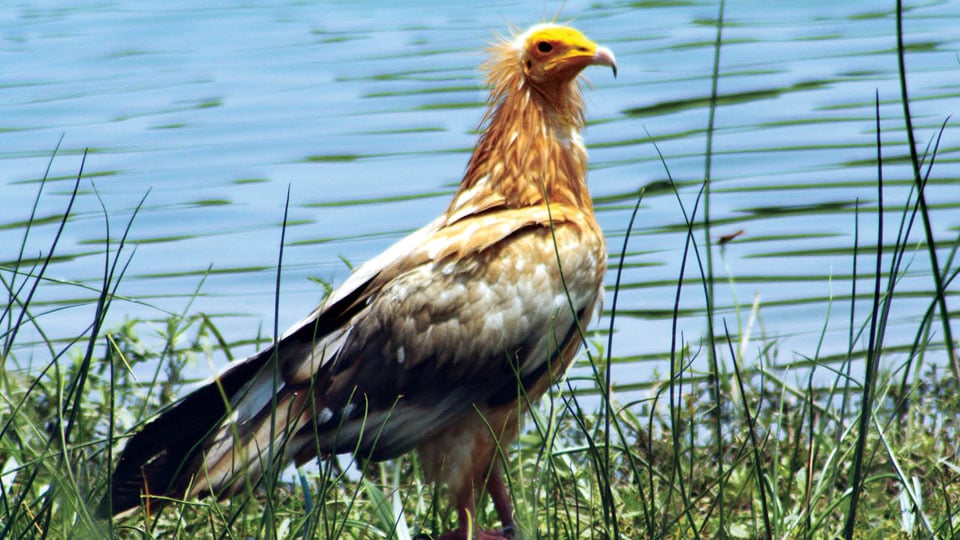




Recent Comments